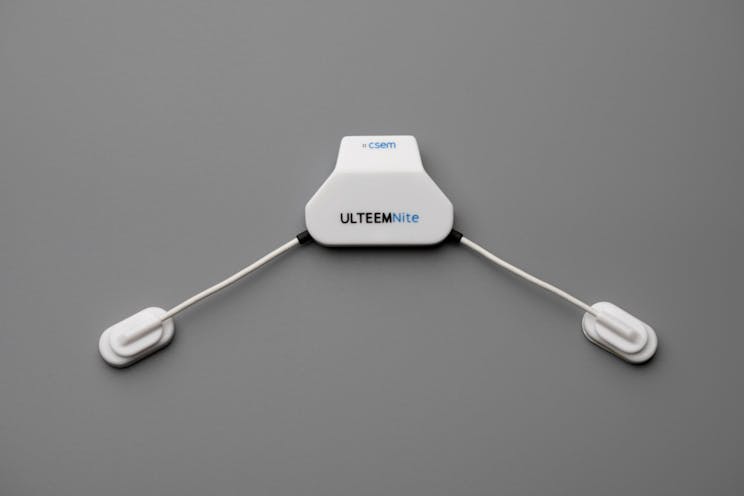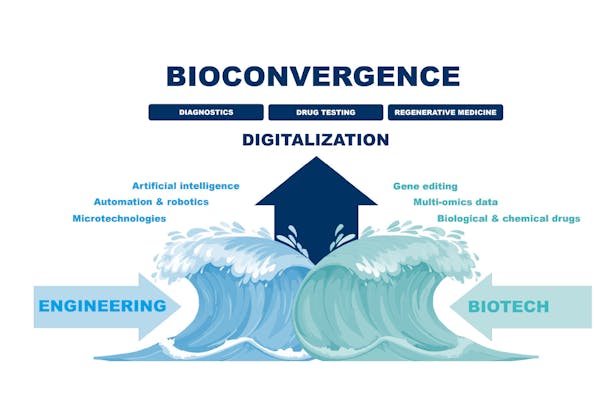The future of continuous, ambulatory, long-term monitoring of electric brain activity
Epilepsy and sleep disorders call for effective monitoring of brain activity. CSEM and the Inselspital, University Hospital Bern, have teamed up to develop a solution that enables reliable, long-term, and continuous monitoring of brain activity throughout the day and in particular the night, right from the comfort of one’s own home.

Epilepsy, a neurological disorder affecting around 50 million people around the world (or 1% of the global population), is a chronic condition prevalent among approximately 6 million individuals in Europe. Its causes range from neurovascular pathologies, genetics and head trauma to viral infections, or complications during prenatal development. The majority of epilepsy patients are older than fifty years – and also acquire epilepsy after the age of fifty years – which has been referred to as “late(r)-onset epilepsy”. Importantly, patients with late(r)-onset epilepsy have a significantly increased risk of developing dementia. Current research indicates that late(r)-onset epilepsy and sleep disorders might be modifiable risk factors for neurodegeneration.
Epilepsy is characterized by recurring spontaneous seizures that are challenging to predict and often to control. Accurate monitoring of brain activity during seizures plays a vital role in diagnosing and effectively managing epilepsy, enabling tailored treatment plans for each individual. Typically, epilepsy patients must make multiple visits to clinics and medical offices for care. Diagnostic tests often rely on specialized and costly equipment, such as electroencephalogram (EEG) devices, which are only available in clinical settings. This typically non-invasive procedure involves placing electrodes on the scalp to detect and record the brain's electrical signals. For extended monitoring periods (24/7 including during sleep), wearable devices are utilized to continuously track electric brain activity, providing comprehensive seizure data. “Due to the levels of stigmatization still experienced by individuals with epilepsy, there is an urgent demand for inconspicuous solutions that allow for longitudinal monitoring of neurological disorders in real-world environments,” explains Prof. Kaspar Schindler, Director of the Sleep-Wake-Epilepsy Center and NeuroTec at the Department of Neurology of the Inselspital, University Hospital Bern.
Medical limitations in addition to individual discomfort
Despite significant advancements, EEG monitoring still faces notable medical limitations. One of these limitations is that both daytime EEG and sleep studies are performed in artificial conditions, which can potentially mask or amplify clinically significant findings. Moreover, factors like movement or muscle activity can affect EEG readings, leading to false results or the omission of seizure events. Obtaining accurate measurements of the disorder’s dynamics often necessitates repeated monitoring, but factors such as budget constraints, logistical challenges, and geographical distances may hinder regular visits to healthcare professionals. Moreover, current wearable devices used for monitoring may cause discomfort or skin irritation due to the gel electrodes and they require frequent battery charging and are difficult to handle by patients, in particular those who have cognitive impairments.
Placing the patients’ comfort at the center of the solution
As part of a collaborative research program CSEM and the Department of Neurology of the Inselspital, University Hospital Bern created the ULTEEM (ultra-long-term EEG monitoring) solution to address this unmet medical need. Their aim was to develop a less obtrusive technology, based on CSEM’s active dry electrode patents. For the initial daytime application of the ULTEEM solution, the interdisciplinary team successfully integrated CSEM’s dry electrodes into a new device comprising two sensors that can be clipped onto any metallic glasses frame. The device enables sensor connection through a single wire, which does not necessarily require shielding or insulation (Cooperative Sensors). Despite the simplified connection of the metallic frame of the eyeglasses which serves as single wire, the signal quality remains consistently strong.

The ULTEEMNite recording system developed by CSEM weighs merely 17 grams.
The second application of the ULTEEM solution focuses on night-time usage, catering to both sleep monitoring and 24/7 epilepsy monitoring. Weighing merely 17 grams (a 5 Swiss franc coin weighs 13.2 grams), the device is seamlessly integrated into a headband worn by patients during their sleep. The solution adheres to applicable medical device standards (IEC 60601-1 and IEC 80601-2-26) and utilizes CSEM’s proprietary dry electrodes to measure electric brain activity between the temples. “Finding a good balance between patient comfort and reliability of measurements is essential to achieve long-term monitoring at home conditions. Our technology simplifies the integration of clinical-grade devices into daily materials such as textiles or glasses frames without any compromise on signal quality”, states CSEM’s project manager Gürkan Yilmaz. The ULTEEM solution’s sensors are powered by a rechargeable battery and communicate with portable devices via Bluetooth™ Low Energy protocol. This allows for real-time visualization of the collected data as well as future data downloads.
The ULTEEM day solution underwent testing with 10 healthy volunteers, while the ULTEEM night solution was tested with 10 patients during a sleep study at the Sleep-Wake-Epilepsy-Center of the Department of Neurology at the Inselspital, University Hospital Bern. The clinical outcomes revealed stable and accurate data recording over a span of 12 hours, with participants finding the device comfortable to wear. The spectrogram analysis displayed clear sleep spindles and slow wave activity, without any interference from power line frequency (50 Hz) eliminating the need for a notch filter.
Plans to continue the cooperation
The partners are now preparing for an extended clinical study involving an upgraded version of the ULTEEM night solution, aimed at further enhancing its usability. The device will also be integrated into a secure cloud ecosystem. Through the analysis of the collected data and in close dialogue with the team of Prof. Kaspar Schindler from the University Hospital Bern (Inselspital), the research partners continue refining the algorithms for sleep staging, including the detection of sleep spindles and also epileptiform signals. “Thanks to this successful multidisciplinary collaboration, the deployment of recent technological advances in wearable biomedical devices brings crucial value to clinicians in pathologies such as epilepsy, sleep disorders, which may promote neurodegenerative diseases for an ever-growing aging society,” states Jens Krauss, Head of CSEM’s Systems Business Unit.
Find out more about how CSEM and Inseslpital, University Hospital Bern are streamlining prenatal care and continuous monitoring for pregnancy and birth by utilizing wearable smart dry electrodes and artificial intelligence (AI).


